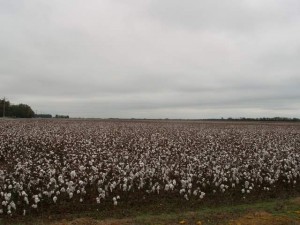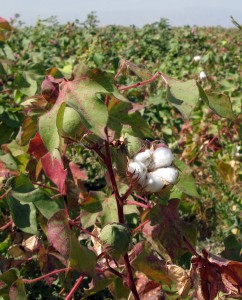Over 60% of India’s workforce still works in the agricultural sector. Most are tenant farmers living in small villages, and a recent survey says a minimum of 40% of them would rather be doing something else rather than farming. At the same time the country is facing a looming crisis with as crop yields haven’t grown much since the green revolution, and population continues to. (more…)
November 15, 2009
Genetically Engineered Crops: Cotton
Scientific Name: Gossypium itscomplicated*
Genetically Engineered Traits: Insect Resistance (bt), Herbicide Resistance
Details of Genetic Engineering:
Cotton has been genetically engineered to resist both glyphosate (by Monsanto) and glufinsate (by Bayer CropScience) under the names Roundup Ready and LibertyLink respectively. As I’ve discussed in previous posts, there are both economic and scientific advantages to having more than one herbicide/herbicide resistance system as it tends to keep prices down, and slows the development of resistant weeds when any resistance they evolve to one herbicide will be useless if the farmer switches to the other for the next growing season.
But the big deal when it comes to genetically engineered cotton is bt cotton that substantially reduces insect damage (and insecticide applications). In the US both Monsanto and Dow AgroSciences sell their own versions of bt cotton using different bt proteins with different specificities. The Chinese government has also developed and deployed their own bt cotton varieties. Bt cotton is the most widely grown** type of genetically engineered plant in the world today, grown in countries like China, India***, and Australia, where other genetically modified crops are not yet approved, for the obvious reason that it’s harder to get people upset about wearing “unnatural” things than eating them.****
About Cotton: (more…)

